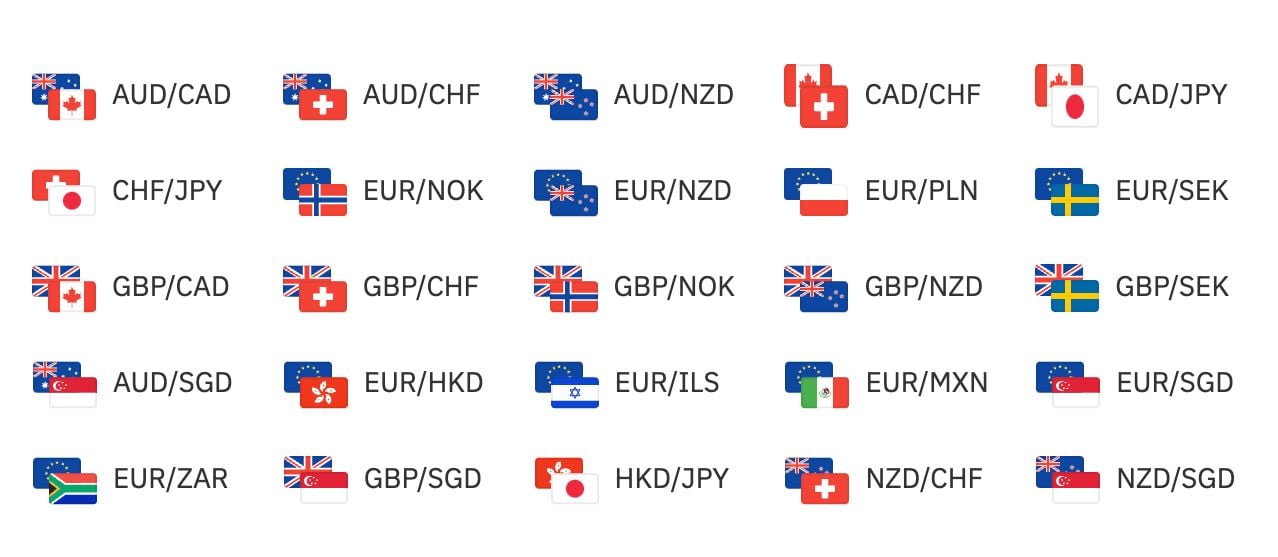This post was originally published by Deriv on 16 June 2022.
Jim Alvarez is a forex trader who usually trades major forex pairs. In 2016, when talks of Brexit were making headlines, he decided to include cross-currency pairs in his trading strategy, which enabled him to diversify his portfolio and balance out his risk.
What are cross-currency pairs?
Cross-currency pairs, also known as currency crosses, are currency pairs which don’t include the US dollar. In forex, currencies are traded against each other, and the most popular are the euro, US dollar, Japanese yen, Canadian dollar, Australian dollar, pound sterling, Swiss franc, and New Zealand dollar. If you exclude the US dollar from the list and trade any of these currencies against each other, you would be trading cross-currency pairs.
How did cross-currency pairs come to exist?
After World War II, globalisation was setting in, and there was a need to understand how the currencies of different countries ranked against each other. However, this called for a standardised format by which these currencies could be measured. Post-WWII, the US economy and currency ranked among the strongest internationally, and since the US dollar at this time was also linked to gold, it became the world’s reserve currency. This means it is usually held by a central bank and is used as a common denomination for international trades and included in the country’s foreign exchange reserves.
When that happened, if a trader wanted to trade pound sterling against the euro, they would have to convert pound sterling to US dollar first and then US dollar to euro. This created drawbacks, and traders lost out on favourable exchange rates as it took more time to place a trade.
As the pace of globalisation increased and the forex market grew, traders wanted easy access to several currencies without relying on the US dollar. This is why cross-currency pairs were introduced – to ensure a seamless conversion of currencies that aren’t linked to the US dollar.
Why you should consider adding cross-currency pairs to your trading portfolio
Cross-currency pairs present multiple trading opportunities, and here are 4 reasons why they can be a beneficial addition to your trading strategy:
1. Trade without being tied to the US dollar
When you trade currency pairs linked to the US dollar, you are limited to a single prediction of whether the US dollar might go up or down. However, with cross-currency pairs, you can consider other factors that are unaffected by the US dollar and discover more trading opportunities. Cross-currency pairs can also be a part of your go-to trading strategy if you need to wait out volatile trading conditions with the US dollar.
2. Diversify your portfolio
Trading different instruments helps keep your portfolio varied and may increase your chances of enhanced potential profit. Plus, you also have the chance to trade currency pairs sensitive to price movements in the commodities market because those countries produce and export various goods and services. Keep in mind this strategy depends on thorough research of political, social, and economic factors that influence these trends.
3. Hedging in forex
Simply put, hedging is a strategy in which you secure your trade (if the market doesn’t move in your favour) by also placing an opposite trade. You can spread out the risk by trading different cross-currency pairs to secure yourself against the volatility of cross-currency rates.
4. Increase your trade volume during specific world events
In the past, if you wanted to capitalise on a world event that wasn’t tied to the US dollar, you would have to place 2 separate trades, incurring 2 transaction fees. For example, if you wanted to trade euro and pound sterling, you would have to pay transaction fees for a EUR/USD trade and a GBP/USD trade. However, with cross-currency pairs, you can place a trade directly on the currency itself – EUR/GBP. So, your capital can be used to increase your trade volume instead of being used for transaction fees for several trades.
The US dollar is the currency of the world’s leading economy, and its status comes with higher liquidity. That’s why many traders prefer trading major currency pairs that include this currency. However, cross-currency trading can present some unique trading opportunities you may want to explore. Depending on which cross-currency pair you prefer, you can trade CFDs on Deriv MT5 and Deriv X or go for options and multipliers trading on Deriv Trader.
Here are a few cross-currency pairs you can trade on Deriv:

Why don’t you test cross-currency pair trading before including it in your trading strategy and portfolio? All you’ve got to do is log in to your demo account that is pre-loaded with virtual funds and start trading.
Disclaimer:
Options trading and the Deriv X platform are not available for clients residing within the EU. This content is not intended for clients residing in the UK.
You may also like:
